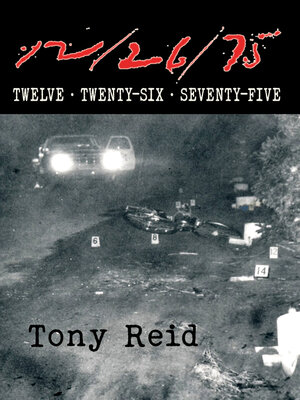
Sign up to save your library
With an OverDrive account, you can save your favorite libraries for at-a-glance information about availability. Find out more about OverDrive accounts.
Find this title in Libby, the library reading app by OverDrive.



Search for a digital library with this title
Title found at these libraries:
| Library Name | Distance |
|---|---|
| Loading... |
For Tony Reid, this case began as a claim of innocence in the murder of Donna Jo Richmond in 1975. While the errors in the original investigation and a flawed trial resulted in a guilty verdict, the reassessment confirmed that the defendant was framed but the question became: by whom? Working with a new team of investigators, which included two of the original detectives, the probe uncovered a startling new possibility: Was the real culprit a serial offender?
Turning to the public for information, Mr. Reid created the 12/26/75 podcast. Based on primary evidence and new interviews surrounding the murder of Donna Jo on that date in Exeter, California, the team re-examined every possibility. The investigators soon found something more than a terribly failed verdict. They discovered connections to the unsolved murders of Jennifer Armour and Claude Snelling—and links to The East Area Rapist. They uncovered shocking corruption by the original lead investigator who illegally destroyed trial evidence and looked into the unexplained death of the original defense attorney. This pursuit led them right back to Exeter, where a new suspect in these murders emerged: Joseph DeAngelo, who was then a full-time sergeant with the local police department, the officer in charge of violent crimes and burglary investigations.
This book is more than an adaptation of the 12/26/75 podcast. It shares new insight formed during the investigation and provides a first-hand look at the Tulare crimes, as well as exposing the faulty evidence used to obtain and maintain the false conviction. More than anything else, 12/26/75 demonstrates the enormous consequences of letting a serial killer go free, made worse when combined with the painful mistakes, in-fighting, and finger-pointing by certain jurisdictions. The catastrophic results are undeniable. Now that the mystery of how it all unfolded is revealed, we can also begin to examine the reforms necessary to prevent this tragedy from happening again.







